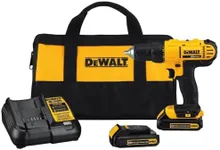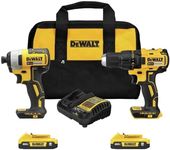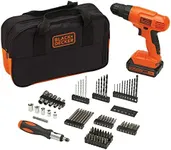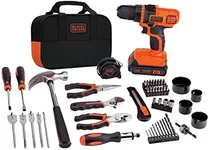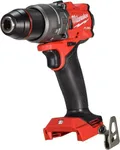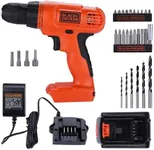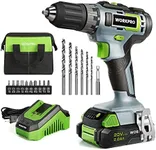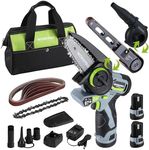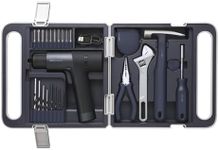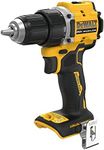Buying Guide for the Best Lightweight Drill
Choosing the right lightweight drill involves understanding your specific needs and the key features that will best serve those needs. Lightweight drills are ideal for tasks that require less power and more maneuverability, such as assembling furniture, hanging pictures, or light carpentry work. To make an informed decision, consider the following key specifications and how they align with your intended use.WeightWeight is a crucial factor in a lightweight drill because it directly affects how easy the drill is to handle and use for extended periods. Lightweight drills typically range from 2 to 4 pounds. If you plan to use the drill for long periods or in awkward positions, a lighter model (around 2 pounds) will reduce fatigue. For occasional use or less demanding tasks, a slightly heavier drill (up to 4 pounds) may be acceptable.
Power (Voltage)The power of a drill is often measured in volts. Lightweight drills usually come in 12V or 18V options. A 12V drill is sufficient for light-duty tasks like drilling into drywall or assembling furniture. If you need a bit more power for slightly tougher materials like softwood or plastic, an 18V drill might be more appropriate. Consider the types of materials you'll be working with to determine the right voltage for your needs.
Battery LifeBattery life determines how long you can use the drill before needing to recharge. This is particularly important if you plan to use the drill for extended projects. Look for drills with lithium-ion batteries, as they offer longer life and quicker charging times. If you have multiple projects or a larger task, consider a drill with a higher amp-hour (Ah) rating, such as 2.0Ah or more, to ensure longer usage between charges.
Chuck SizeThe chuck size indicates the maximum diameter of the drill bit that the drill can hold. Common sizes for lightweight drills are 3/8 inch and 1/2 inch. A 3/8 inch chuck is suitable for most light-duty tasks and can handle a variety of bit sizes for general use. If you anticipate needing to use larger bits for specific tasks, a 1/2 inch chuck might be more versatile.
Speed SettingsSpeed settings on a drill allow you to adjust the rotation speed for different tasks. Lightweight drills often have two-speed settings: low (for driving screws) and high (for drilling holes). Some models offer variable speed triggers for more precise control. If you need versatility for different materials and tasks, look for a drill with multiple speed settings or a variable speed trigger.
ErgonomicsErgonomics refers to how comfortable and easy the drill is to use. Features like a comfortable grip, balanced weight distribution, and easy-to-reach controls can make a big difference, especially during extended use. Consider trying out the drill in person to see how it feels in your hand and ensure it is comfortable to use for your specific tasks.
Additional FeaturesAdditional features can enhance the usability of a lightweight drill. Look for features like LED lights for better visibility in dark spaces, a built-in level for more precise drilling, and a belt clip for easy access. While these features are not essential, they can make your work more efficient and convenient.
